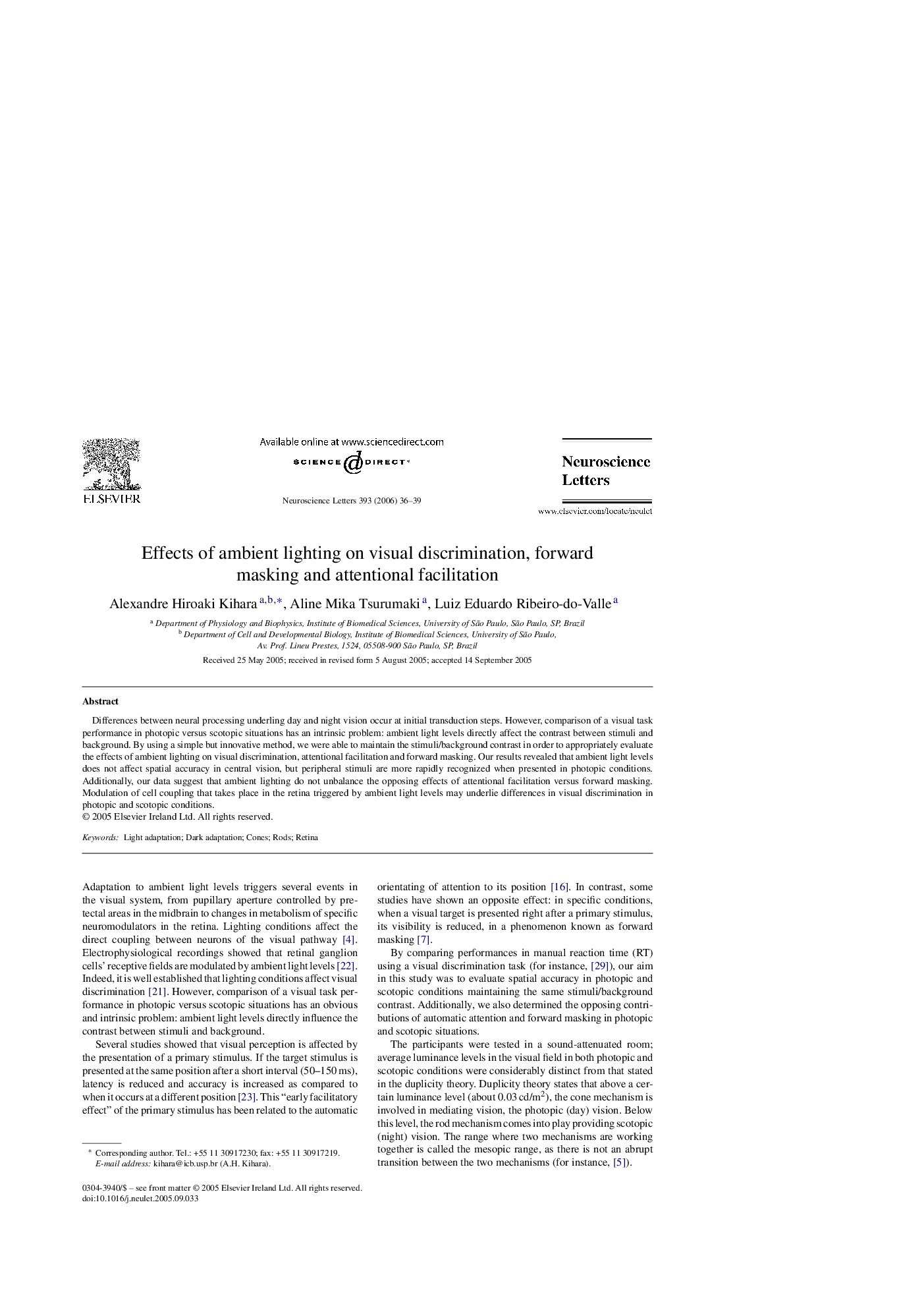| Article ID | Journal | Published Year | Pages | File Type |
|---|---|---|---|---|
| 4350977 | Neuroscience Letters | 2006 | 4 Pages |
Differences between neural processing underling day and night vision occur at initial transduction steps. However, comparison of a visual task performance in photopic versus scotopic situations has an intrinsic problem: ambient light levels directly affect the contrast between stimuli and background. By using a simple but innovative method, we were able to maintain the stimuli/background contrast in order to appropriately evaluate the effects of ambient lighting on visual discrimination, attentional facilitation and forward masking. Our results revealed that ambient light levels does not affect spatial accuracy in central vision, but peripheral stimuli are more rapidly recognized when presented in photopic conditions. Additionally, our data suggest that ambient lighting do not unbalance the opposing effects of attentional facilitation versus forward masking. Modulation of cell coupling that takes place in the retina triggered by ambient light levels may underlie differences in visual discrimination in photopic and scotopic conditions.
